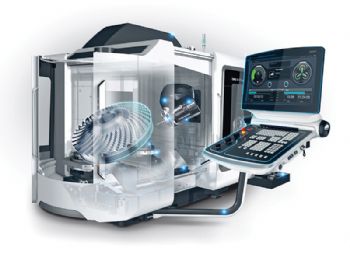
The world’s largest ultrasonic-assisted machine tool is coming to the University of Sheffield Advanced Manufacturing Research Centre (
www.amrc.co.uk), cementing its reputation for world-leading research capabilities in composite machining.
The £1.8 million DMU 340 G linear machine tool (due to arrive at the AMRC in late December) will be the first of its size to be fitted with an ultrasonic-capable spindle for use in five-axis machining applications.
The specification for the machine — which has a 59m
2 footprint — was developed with input from Kevin Kerrigan, leader of the composites machining group at the AMRC Composites Centre.
The DMU 340 G is capable of providing significant improvements in composite machining, ranging from high-end luxury vehicle monocells to lightweight fan blades for next-generation aero-engines.
It is also capable of titanium drilling and finishing operations, and of working with materials such as glass fibre-reinforced aluminium and an array of high-temperature composite materials.
The machine features linear motors for high accuracy and rapid motion, novel dust extraction technology, high-pressure cutting-fluid delivery systems, on-machine inspection technology and a multitude of Industry 4.0 capabilities.
It will have applications for companies like McLaren, Roll-Royce, Boeing, BAE Systems and Airbus. It also opens up opportunities in the renewables, medical and construction sectors.
Dr Kerrigan said: “The ultrasonic-assisted machining process is basically the same as a standard rotatory cutting-tool operation, but with an added highly tunable micro-scale axial motion of the cutting tool providing a secondary motion during cutting.
"This has the ability to control the amount of energy supplied to the cutting interface, affecting the amount of thermal energy and fracture energy associated with the process.”